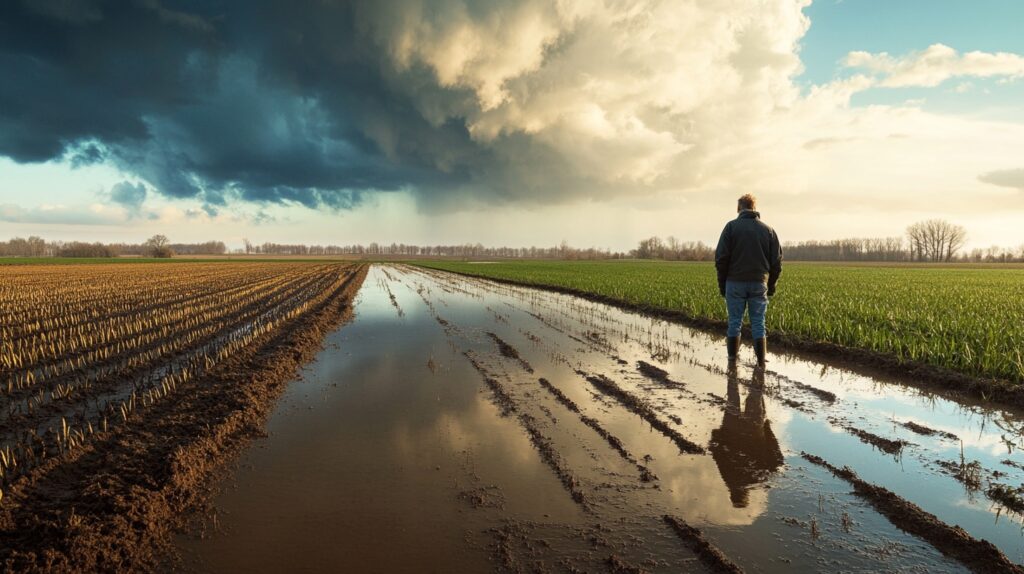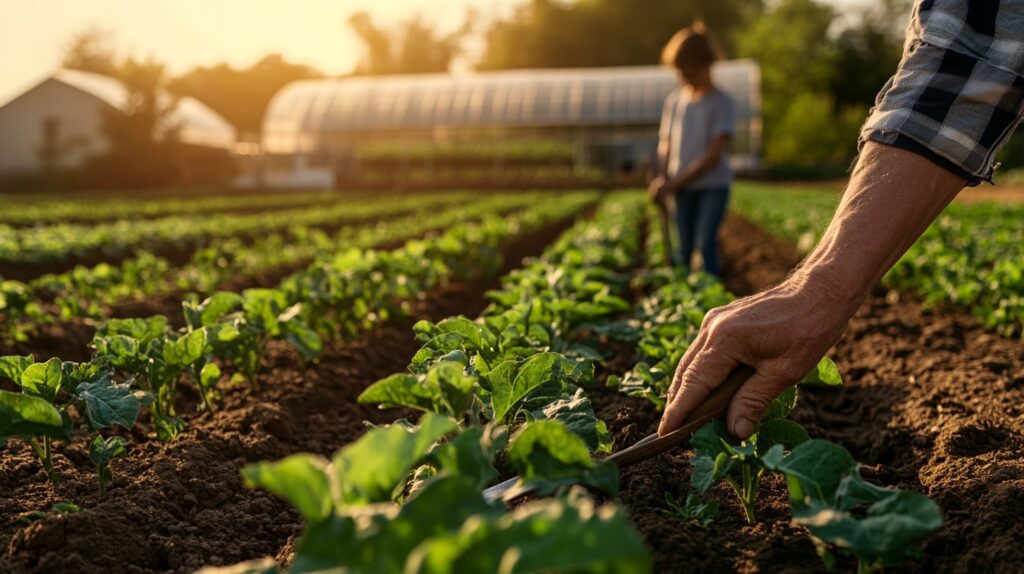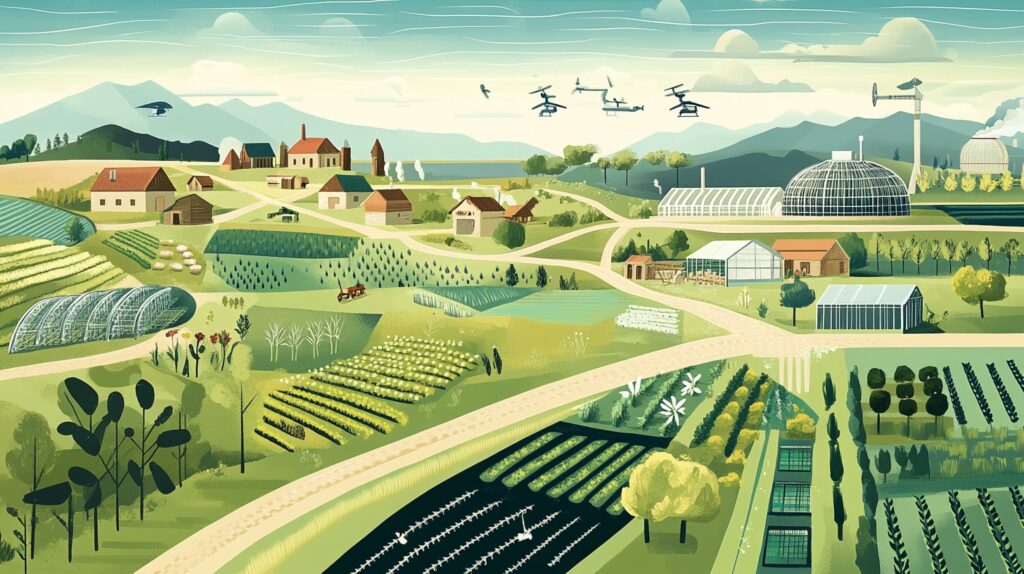Agriculture, the backbone of human civilization, has undergone a tremendous transformation over the centuries. From rudimentary methods of cultivation to sophisticated technological advancements, the journey of agricultural practices is a testament to human ingenuity and adaptability. In this blog post, we explore the evolution of agricultural practices and the major shifts in agricultural practices, comparing traditional methods with recent innovations.
This blog post is part of the EU Funded project “Intergenerational Hub for the Amelioration of Sustainable Agricultural Practices and Entrepreneurial Mindset,” coordinated by L4Y Learning for Youth GmbH, with partners KMOP, Polish Farm Advisory, Citizens in Power, Challedu. Here is the home page of the project.
Traditional Agricultural Practices
Subsistence Farming in the Evolution of Agricultural Practices
Traditional agriculture, dating back thousands of years, relied heavily on labor-intensive methods and simple tools. Most ancient farmers engaged in subsistence farming, producing just enough food for their families with little surplus. This method relied significantly on manual labor and natural resources.
Crop Rotation and Irrigation in Traditional Practices
Moreover, early farmers recognized the benefits of rotating crops to maintain soil fertility. By alternating the types of crops grown in a particular area, they could prevent soil depletion and control pests and diseases. Moreover, ancient civilizations like the Egyptians and Mesopotamians developed irrigation systems to support agriculture in arid regions. These early techniques involved simple canals and ditches to divert water from rivers to fields.
Domestication of Animals in Agricultural Evolution
Additionally, the domestication of animals provided labor, manure for fertilizing fields, and a reliable food source. Oxen and horses were commonly used to plow fields, significantly boosting productivity. Tools like hoes, sickles, and plows, often made from wood and stone, were the primary implements for cultivation and harvesting.
Contemporary Agricultural Practices
Mechanization and Technology in the Evolution of Agricultural Practice
Contemporary agriculture has been revolutionized by scientific advancements, mechanization, and technology. For example, the introduction of tractors, combine harvesters, and other machinery has drastically reduced the need for manual labor, increasing efficiency and the scale of production.
Synthetic Inputs
Furthermore, the use of synthetic fertilizers, pesticides, and herbicides has become commonplace, helping to boost crop yields and control pests. However, this has also raised concerns about environmental impact and sustainability.
Genetically Modified Organisms (GMOs)
GMOs have been engineered to resist pests, tolerate herbicides, and improve nutritional content. Consequently, this biotechnology has sparked debates over food safety, environmental impact, and ethical considerations.
Precision Agriculture
Using GPS, drones, and data analytics, precision agriculture allows farmers to monitor crop health, soil conditions, and weather patterns with remarkable accuracy. Therefore, this leads to more efficient use of resources and optimized crop yields.
Sustainable Agricultural Practices
Organic Farming and Permaculture
In response to the environmental impact of modern agriculture, there is a growing emphasis on sustainable practices. These include organic farming, permaculture, agroforestry, and conservation tillage, aiming to reduce ecological footprints and promote biodiversity.
Vertical Farming and Hydroponics
Vertical farming and hydroponics are innovative methods that allow for growing crops in controlled environments with minimal soil use. For instance, vertical farming stacks layers of crops in urban settings, while hydroponics grows plants in nutrient-rich water, both reducing the need for large land areas and improving food security in densely populated regions.
Impact of the Evolution of Agricultural Practices
Food Production and Society
The shift from traditional to modern agricultural practices has had profound effects on food production and society. Modern techniques have significantly boosted crop yields, enabling farmers to produce more food on less land. As a result, advances in agriculture have contributed to a reduction in global hunger and malnutrition, although challenges remain in distribution and access.
Environmental and Economic Changes
Intensive farming practices have led to soil degradation, water pollution, and loss of biodiversity. Consequently, sustainable farming aims to mitigate these impacts. Mechanization and industrial farming have transformed rural economies, often leading to urban migration and changes in traditional farming communities.
Climate Change
Agriculture both contributes to and is affected by climate change. Hence, practices such as deforestation for farmland and methane emissions from livestock exacerbate global warming, while farmers must also adapt to changing weather patterns.
Conclusion
In conclusion, the evolution of agricultural practices reflects humanity’s ongoing quest to balance food production with environmental stewardship and economic viability. As we look to the future, embracing sustainable practices and innovative technologies will be crucial in ensuring a resilient and equitable food system for generations to come. The challenge lies in integrating the wisdom of traditional methods with the advancements of modern science to create a harmonious and productive agricultural landscape.
If you want to read more on the topic, please read our Pedagogical Guidebook here.











